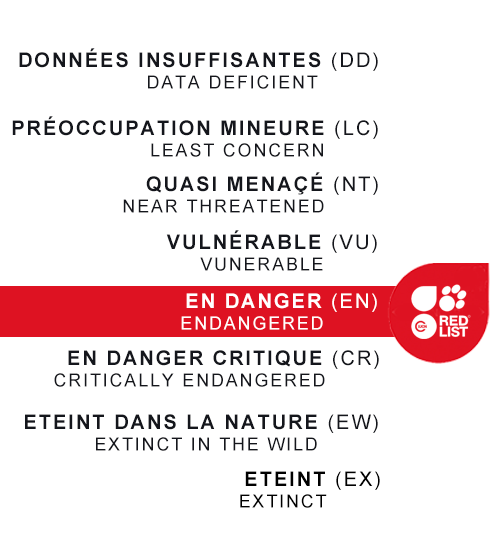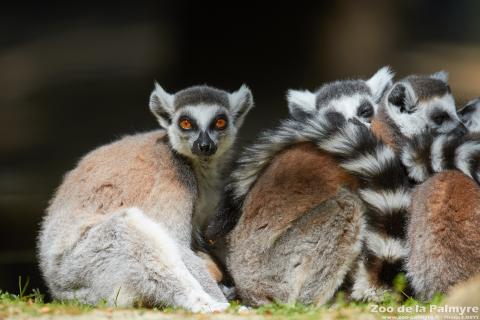Ring-tailed Lemur

Ring-tailed Lemur

-
Class
Mammalia -
Order
Primates -
Familly
Lemuridae
-
 45cm
45cm -
 2.2kg
2.2kg -
 4 ½ months
4 ½ months -
 1, sometimes 2
1, sometimes 2 -
 20 years
20 years
-
Diet
frugivorous (fruit, flowers, leaves, occasional insects and small vertebrates) -
Habitat
dry forests, thorn forests -
Range
south and south-west Madagascar -
 This species is part of a European Breeding Program
This species is part of a European Breeding Program
-
Population in the wild
En diminution -
IUCN REDLIST status


Ring-tailed Lemurs are the most terrestrial lemurs. They like sitting on the ground to warm themselves in the sun, spreading their arms out and resting them on their knees. In cool weather they hug one another to keep warm.
Ring-tailed Lemurs live in groups of up to 30 males and females. They mark their territory with odiferous glands in the anogenital area under their tails. Males also use glands near their armpits and on their wrists: in the breeding season they engage in scent battles, frenetically moving their ringed tail above the heads of their rivals, after rubbing it against the glands of their forearms. Females are dominant and remain in their birth group until they reach sexual maturity.
Females generally have one young, or sometimes twins when environmental conditions (especially food supplies) are good. The young cling to the mother’s stomach for the first 2 weeks and are then carried on her back.
Ring-tailed Lemurs have a repertory of about 15 vocal cries. They miaow and purr like cats. Their alarm signal sounds like a howl and they express fear with strident cries.








